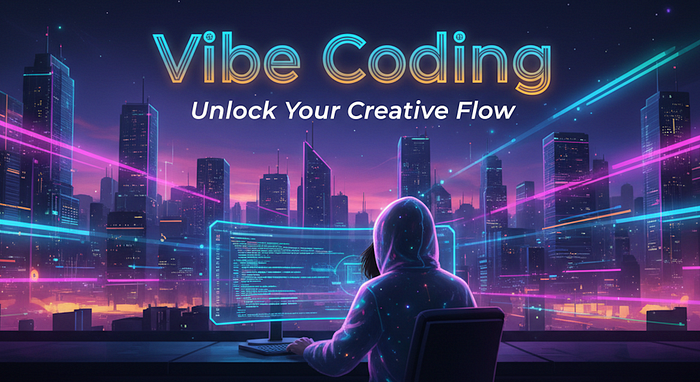Introduction to Vibe Coding
Vibe coding is a trend where code creation is less about writing every line and more about guiding AI tools through intent, feedback, and iteration. It’s about describing what you want, letting the AI generate it, and then steering, correcting, and hardening it until it fits. This approach doesn’t remove engineering skill, but it redefines it. You still need to understand architecture, testing, and debugging, but your focus shifts from typing syntax to directing behavior.
What’s the Hype Around Vibe Coding?
At its core, vibe coding means developing software by communicating intent to an AI system — describing what to build, reviewing how it creates it, and refining until it feels right. Instead of writing every function from scratch, developers act as curators or conductors, using AI tools to scaffold the work. The result is faster iteration and an expanded creative range. Vibe coding does not mean zero-coding; it’s AI-guided coding, where your role transitions from micromanaging details to curating, correcting, and orchestrating.
The Vibe Coding Mindset
Vibe coding follows a simple workflow loop, which can be summarized as:
- Describe your intent clearly
- Let the AI scaffold your project
- Run and observe
- Refine through feedback
- Validate and integrate
A key insight is that you’re not just "getting the AI to code" — you’re steering the AI, validating, pruning, and integrating. The expertise shifts from writing code to guiding the AI.
Hands-On Example of Vibe Coding
Let’s walk through a small project example of creating a "Metrics API." The goal is to create an endpoint that returns basic usage metrics for an account. The process involves:
- Describing the intent: You prompt the AI with what you need, e.g., "Build a Node.js Express route /metrics/usage that returns a JSON object with today’s request count, error count, and average latency. Include error handling."
- Running and observing: The AI generates a stub, which you review and identify gaps.
- Iterating: You refine the prompt to address missing elements, such as authentication and defaults.
- Validating and integrating: You add tests, polish naming, and ensure security.
Risks and Pitfalls of Vibe Coding
While vibe coding can accelerate development, it’s not without risks. Common pitfalls include:
- Overreliance on AI output
- Fragmented architecture
- Prompt fatigue
- Harder debugging
- Drifting code style
- Scaling surprises
- Ethical and licensing blind spots
To avoid these, it’s crucial to review AI-generated code carefully, maintain a clear architecture, focus on clarity in prompts, and ensure testing and validation are part of the process.
When Not to Use Vibe Coding
Vibe coding isn’t suitable for every project. It’s best to avoid it when working on:
- Security-critical systems
- Performance-sensitive paths
- Legacy systems with fragile dependencies
- Core business logic
In these cases, traditional, hand-coded, peer-reviewed work is preferable.
Embracing the Vibe in Vibe Coding
To make the most of vibe coding, start small, be intentional with prompts, add tests early, enforce structure, review AI code like a teammate’s, and track what works. The more structure and feedback you bring, the better the outcome.
Conclusion
Vibe coding is about expanding what developers can do, freeing them from boilerplate and repetition to focus on flow, design, and creative problem-solving. It requires technical judgment applied earlier and faster. The skill of the future isn’t just knowing syntax but knowing how to guide intelligent tools toward reliable outcomes.
FAQs
- Q: What is vibe coding?
A: Vibe coding is a development approach where you guide AI tools to generate code based on your intent, feedback, and iteration. - Q: Is vibe coding replacing traditional coding?
A: No, vibe coding redefines the role of developers from writing every line of code to guiding AI tools and ensuring the generated code meets the requirements. - Q: What are the benefits of vibe coding?
A: Faster iteration, expanded creative range, and the ability to focus on high-level aspects of software development. - Q: What are the risks of vibe coding?
A: Overreliance on AI output, fragmented architecture, prompt fatigue, harder debugging, drifting code style, scaling surprises, and ethical and licensing blind spots. - Q: When should I not use vibe coding?
A: Avoid vibe coding for security-critical systems, performance-sensitive paths, legacy systems with fragile dependencies, and core business logic.











